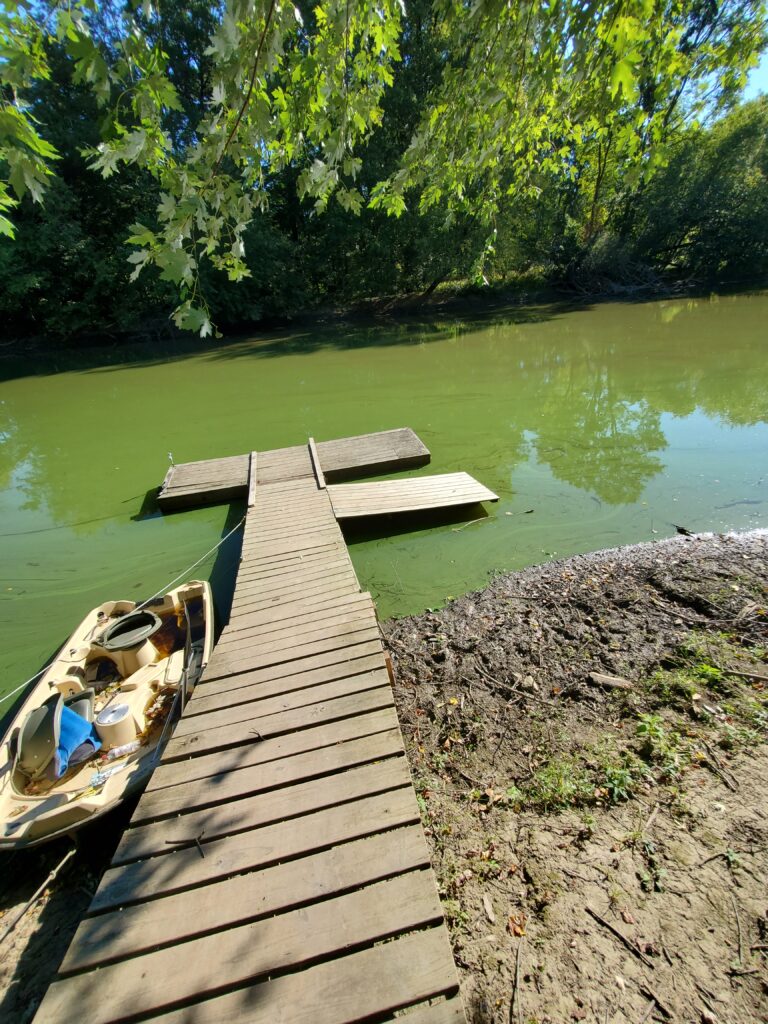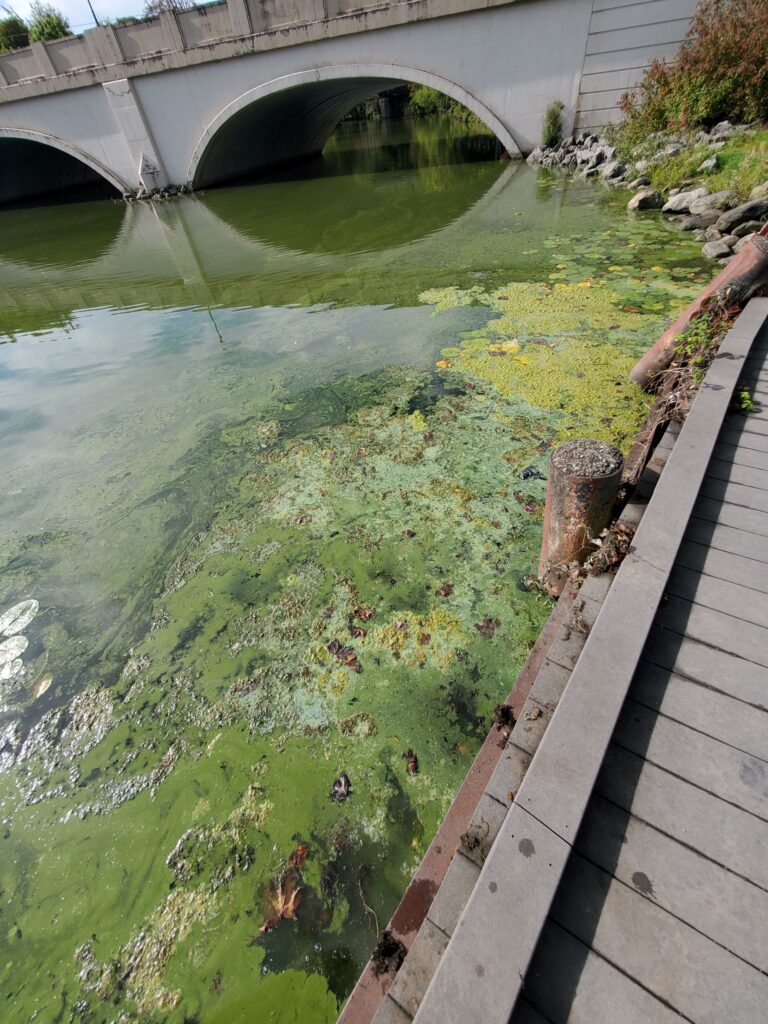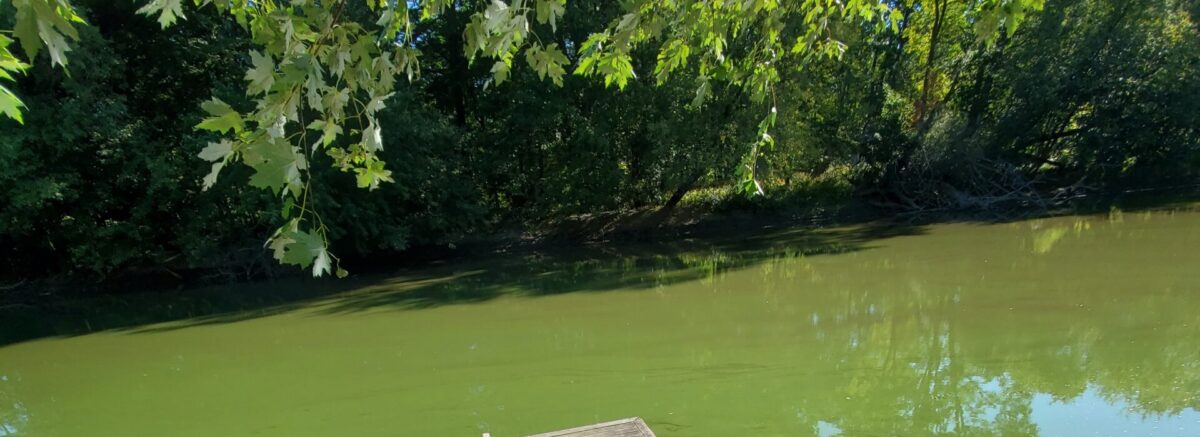When possibly the oldest life form on Planet Earth has had about 2.7 billion years to perfect its survival skills, showing up in unexpected places should come as no surprise. Cyanobacteria is that survivor.
Algal blooms are a familiar, summer sight on the South Basin of Chautauqua Lake. “Algal” leads us to believe we are referring to algae, the biological category containing usually small, aquatic plants. However, the life form responsible for “harmful blooms” is really cyanobacteria. They are microscopic and normally not visible in the water. It is only when the cyanobacteria experience overgrowth that we can see colorful, often unpleasant, surface water. Thus, the common, although technically incorrect, “blue-green algae” name became popular.
The conditions for out-of-control growth of cyanobacteria have traditionally been light, calm water and plenty of nutrients. Summer lake shorelines can be common locations for these conditions. However, recent Conewango watershed sampling is also showing harmful blooms in both the Chadakoin River and the main stem of the Conewango Creek. Because of the water flow and areas of shade these places could be considered unexpected for blooms, especially harmful ones, but no longer.
Blooms can be labeled “harmful” when the Total Chlorophyll-a content in a water sample rises and the percentage of Blue-green Chlorophyll-a is high. Blooms are labeled “toxic” when a lab-performed analysis finds toxin amounts that exceed the established guidelines. Those guidelines include EPA drinking water levels for children, EPA drinking water levels for adults, values for recreational contact and values for animal consumption.
In 2022, a site on the Chadakoin River at McCrea Point was sampled 14 times with 10 of those samples, roughly 70%, being labeled “toxic.” Toxicity began in July and continued into October. September 6, had the highest toxicity value for all 233 samples taken that year throughout the Chautauqua Lake and its outlets. A site on the Conewango Creek, the SR 62 Marden E. Cobb Waterway Access, was sampled 12 times from July through November, with toxic algal blooms occurring 7 times from August into early October (~58%). Both of these river sites exceeded the average toxicity determined from all 233 samples taken.


McCrea Point on the Chadakoin (left) Kayak Livery off Rt. 62 on the Conewango (right)
Yet one year of information does not predict the next. In 2023, the Chadakoin River site was sampled 11 times and the Conewango River site was sampled 3 times and none of the samples were labeled “toxic”.
The question remains for us, what is safe? Because toxicity currently can only be determined by laboratory analysis, we cannot know for sure which blooms are truly harmful. There has been some discussion that if chlorophyll levels (which are more easily measured) are known then toxicity might be approximated. That correlation has not yet been verified and few of us carry chlorophyll probes with us. Heed the advice of the New York State Departments of Environmental Conservation and Health, “Contact with all blooms, surface scums, and visibly discolored water should be avoided.”
At certain times, plenty of nutrients must be flowing in these rivers. The next question is, what can we do to lower the nutrient feast helping this ancient life form, cyanobacteria, survive?
Thank you to our partners, the Chautauqua Lake Association for acquiring the HAB water samples and Dr. Greg Boyer at SUNY College of Environmental Science and Forestry for providing laboratory analysis.

